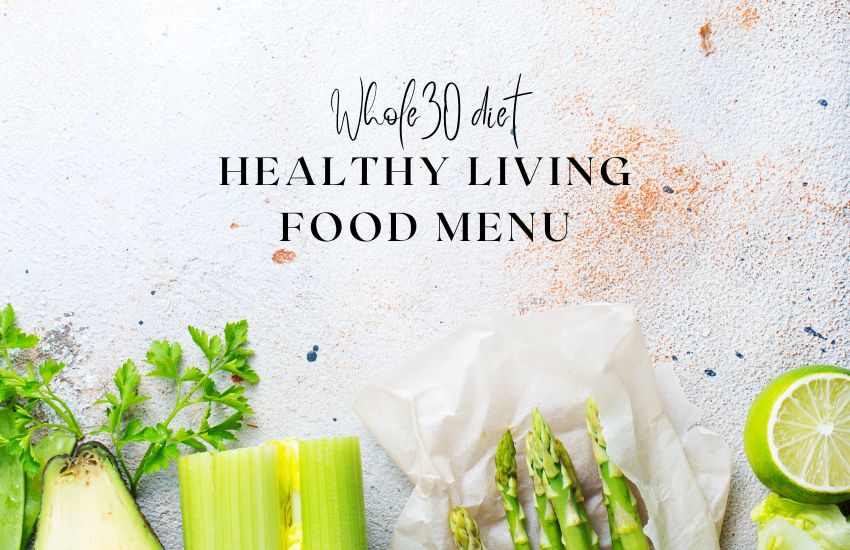The Whole30 Kitchen: Delicious and Nutritious Recipes for a Healthier Lifestyle

Whole30 food blogs are a valuable resource for anyone who wants to try the Whole30 diet. These blogs offer a wide variety of recipes that are not only compliant with the program but also delicious and satisfying. Many of the recipes are easy to prepare and require only a few ingredients, making it convenient for busy individuals who still want to maintain a healthy diet. Whole30 food blogs also provide tips on how to navigate social situations while on the program, and offer suggestions for compliant snacks and travel meals.
In addition to providing recipes and meal plans, Whole30 food blogs can also offer inspiration and motivation for those embarking on the program. Many bloggers share their own personal Whole30 experiences and the positive changes they’ve seen in their health and well-being. Reading about the success stories of others can help keep you motivated and focused on your own journey.
Overall, Whole30 food blogs are a fantastic resource for anyone interested in trying the Whole30 program. They offer a wealth of information and resources to help make the 30-day challenge easier, more enjoyable, and ultimately, more successful.
What is the Whole30 diet?
The Whole30 diet is a 30-day program designed to reset eating habits, eliminate inflammatory foods, and improve overall health. The program involves cutting out certain foods for 30 days, including grains, dairy, sugar, legumes, and processed foods. The goal of the program is to help participants identify any food sensitivities or intolerances they may have, while also improving their digestion, energy levels, and overall health.
During the 30-day period, participants are encouraged to eat whole, unprocessed foods such as meat, fish, eggs, vegetables, fruits, and healthy fats. The program also emphasizes the importance of drinking plenty of water and getting enough sleep and exercise.
After the 30 days are over, participants are encouraged to slowly reintroduce eliminated foods back into their diet, one at a time, to identify any sensitivities or intolerances. The program also provides guidelines for maintaining a healthy diet and lifestyle beyond the initial 30 days.
The Whole30 diet has gained popularity in recent years, with many people reporting significant improvements in their health and well-being as a result of the program.
Why Whole30 is healthy?
The Whole30 diet is considered healthy for a variety of reasons. First and foremost, the program emphasizes the consumption of whole. Unprocessed foods that are rich in nutrients and free from harmful additives and preservatives. By cutting out processed foods and focusing on whole, nutrient-dense foods. The diet can provide a range of health benefits, including improved digestion, increased energy levels, and reduced inflammation.
In addition to promoting whole foods. The Whole30 program also eliminates several common allergens and inflammatory foods, such as grains, dairy, and added sugars. For individuals with food sensitivities or autoimmune conditions. Eliminating these foods can lead to a significant improvement in symptoms and overall health.

The program also encourages the consumption of healthy fats. Such as those found in avocados, nuts, and olive oil. Which can help improve cholesterol levels and support overall heart health. The emphasis on drinking plenty of water and getting enough sleep and exercise also contributes to overall health and well-being.
While the Whole30 diet may not be suitable for everyone. It can be a helpful tool for those looking to improve their overall health and reset their eating habits. However, it’s important to consult with a healthcare provider before starting any new diet or exercise program
Why is the Whole30 diet so popular?
The Whole30 diet has become popular for several reasons. First, the program offers a clear and simple set of guidelines for improving overall health and well-being. The 30-day time frame is also appealing to many people. As it provides a clear endpoint and a sense of structure and accountability.
Additionally, many people have reported significant improvements in their health and well-being as a result of the program. The emphasis is on the whole. Unprocessed foods and the elimination of inflammatory foods can lead to improved digestion, increased energy levels, and reduced inflammation.
The program also has a strong community aspect. With many people sharing their experiences and offering support and encouragement to others who are following the program. The availability of Whole30-approved recipes and resources. Also makes it easier for people to stick to the program and maintain a healthy diet.
Finally, the popularity of the Whole30 program can also attributed to the growing awareness of the importance of a healthy diet and lifestyle. With more and more people looking for ways to improve their health and well-being. Programs like Whole30 offer a clear and accessible path toward a healthier lifestyle.
How to start the Whole30 diet?
Starting the Whole30 diet involves following a strict set of guidelines for 30 days. Here are the basic steps to get started:
Read the Whole30 program rules and guidelines: Before starting the diet, it’s important to familiarize yourself with the program’s guidelines. The rules can be found on the official Whole30 website or in the book “The Whole30: The 30-Day Guide to Total Health and Food Freedom.”
Plan your meals: Make a meal plan for the next week or two that emphasizes whole, unprocessed foods and eliminates grains, dairy, added sugars, and processed foods. Stock up on groceries that fit within the program’s guidelines.
Commit to the program: The Whole30 program is a 30-day commitment, and it’s important to stick to the guidelines for the full 30 days to experience the benefits of the program.
Start cooking: Experiment with Whole30-approved recipes and try new foods to keep your meals interesting and enjoyable.
Stay accountable: Join a support group or find an accountability partner to help you stay on track and motivated throughout the 30 days.
Reintroduce eliminated foods: After completing the 30 days, slowly reintroduce eliminated foods one at a time to see how they affect your body. Use this information to make informed decisions about your diet moving forward.
Remember, it’s always a good idea to consult with a healthcare professional before starting any new diet or exercise program.
How to find Whole30 recipes?
Finding Whole30 recipes is easier than ever with the abundance of resources available online. Here are some tips for finding delicious Whole30-compliant recipes:
Look for Whole30 blogs and websites: There are many blogs and websites dedicated to Whole30 recipes and resources, including the official Whole30 website, as well as other popular food blogs such as Nom Nom Paleo, The Real Food RDs, and Fed and Fit.
Use social media: Instagram and Pinterest are great resources for finding Whole30 recipes. Use hashtags like #Whole30, #Whole30recipes, and #Paleo to find recipe inspiration.
Check out cookbooks: There are several Whole30 cookbooks available that provide a wide variety of delicious recipes. Some popular options include “The Whole30: The 30-Day Guide to Total Health and Food Freedom” by Melissa Hartwig Urban and Dallas Hartwig, “The Whole Smiths Good Food Cookbook” by Michelle Smith, and “The Defined Dish: Whole30 Endorsed, Healthy and Wholesome Weeknight Recipes” by Alex Snodgrass.
Modify existing recipes: Many recipes can be easily modified to fit within the Whole30 guidelines by substituting non-compliant ingredients with Whole30-approved alternatives. For example, using coconut aminos instead of soy sauce or almond flour instead of wheat flour.
Remember, while there are many delicious Whole30 recipes available, it’s important to prioritize whole, unprocessed foods and eliminate grains, dairy, added sugars, and processed foods during the 30-day program.
Conclusion
In conclusion, the Whole30 diet is a popular program that focuses on whole. Unprocessed foods and eliminating certain food groups for 30 days. It has gained popularity due to its emphasis on improving overall health and well-being. As well as the abundance of resources and recipes available online. Finding Whole30 recipes is easy with the help of blogs, social media, and cookbooks. Modifying existing recipes to fit within the guidelines. While the Whole30 diet may not be for everyone. It can be a great way to jumpstart healthier eating habits and discover new, delicious recipes. As with any dietary change, it’s important to consult with a healthcare provider before starting the program.
Hampton Dumbbells are a type of high-quality, ergonomic dumbbell made from durable materials. They are available in a wide range of weights, making them suitable for all fitness levels. Whole 30 food blogs provide recipes and meal plans for those following the Whole 30 diet. Which focuses on whole, unprocessed foods for 30 days.









